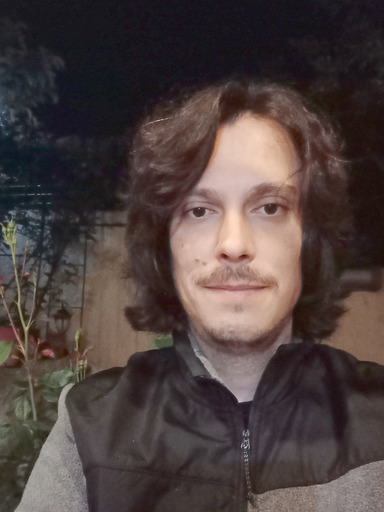
Can you say a few words about yourself ?
I was born in Paris, France, to a mixed family, with my father being Portuguese and my mother being Greek. However, I grew up and finished school in Athens, Greece. I received a BSc in Physics and an MSc in Atmospheric Sciences and Environment from the University of Ioannina in North-Western Greece. At the University of the Aegean in Mytilene, located on the North Aegean island of Lesvos, I received my PhD on the topic of aerosol direct radiative effects using a radiative transfer model.
Did you choose your profession or did it choose you ?
Since my childhood, I remember being fascinated by physics, atmospheric phenomena and weather. I even collected weather prediction maps from newspapers. This passion guided my choice of studies. During my postgraduate studies, I was introduced to computer simulations for the first time, which I found very intriguing. Additionally, I enjoyed being in the academic environment and participating in research. So, I can confidently state that I have chosen my profession!
What attracted you to join LAPI ?
I joined LAPI through a collaboration with Professor Athanasios Nenes in a research program. When he suggested I join LAPI, I happily accepted because LAPI offers high-level research opportunities across a wide spectrum within the field of atmospheric sciences, allowing me to broaden my research interests.
Can you speak about the projects you are currently working on and other ones in the past ?
I mostly participated in projects focusing on atmospheric aerosol properties and radiative transfer simulations. Currently, I am working on a project where I calculate the radiative effects of aerosols emitted from biomass burning. My work involves utilizing a radiative transfer model alongside aerosol data derived from a chemical transport model. I have participated in similar projects during my postgraduate studies. During my PhD, I conducted radiative transfer simulations to compute the aerosol direct radiative effect on a global scale, using aerosol properties from satellite observations and reanalysis data.
What have been some of your biggest challenges ?
Among the biggest challenges I have faced were managing and analyzing large scientific data and performing computationally intensive calculations. I addressed these issues by finding creative methods to optimize the available computational resources.
What have been some of your biggest successes ?
I consider one of my significant successes, aside from completing my PhD, to be the creation of databases and software tools that proved useful for my younger colleagues’ research. They further developed and improved these tools, which I find particularly rewarding.
You split your time between teaching and research. How do you view these two roles ?
I am primarily focused on research and do not engage in teaching activities. I believe that both roles are very significant in academia.
What do you enjoy to do, outside of science and research ?
Outside of science and research, I enjoy spending time outdoors, especially walking in nature. Having spent most of my childhood holidays in a village near the sea, I also love swimming. When I am at home, I enjoy listening to music and reading.
Where is the most interesting place you’ve been ?
I find it difficult to choose just one place as the most interesting. However, if I had to pick, I would choose Nazaré, in central Portugal, due to its impressive ocean waves.
A free thought for the end ?
Creativity can be an effective and enjoyable way to solve problems.